Gone are the days when products were sold in glass or paper packages and stored in household refrigerators. Only a few manufacturers decide to do this, since selling products in ecological packaging is not economically viable. Plastic dominates today and we often underestimate the danger it can pose to our health. It turns out that there is a relatively safe and dangerous plastic. Since we still have no way out, it is worth taking care of choosing the lesser evil. Some types of plastic are really dangerous.
Plastic classification
Information about the material used in the manufacture of the package is located on its bottom in the form of a graphic symbol consisting of three arrows forming a triangle. In the middle of the triangle are numbers from 1 to 7, indicating the type of material from which the packaging is made.
What are these numbers?
1 - PET (PET)
Such plastic is mainly used in the production of disposable beverage containers. Typical PET packaging is mineral water bottles. Such packaging, even after careful cleaning, can release toxic chemicals when reused. Never reuse this kind of material.
2 - HDPE (LDPE)
Low pressure polyethylene (high density) is used for the production of semi-rigid containers, it is one of the safest plastics and can be reused.
3 - PCV (PVC)
Polyvinyl chloride is very often used, for example, in the production of packaging films for food products. PVC is hazardous to health and can release toxins. When burned, PVC produces highly hazardous chemical compounds known as dioxins, which are often more dangerous than potassium cyanide.
4 - LDPE (HDPE)
The high pressure (low density) polyethylene used in many types of packaging (such as plastic bags) is considered recyclable and safer than many other plastics, but not as safe as plastics 2 and 5.
5 - PP (PP)
Reusable polypropylene is often found as a material for food containers. It belongs to the group of the safest plastics along with material 2 (HDPE).
6 - PS (PS)
Polystyrene is well known in the form of foam. PS releases toxins and should not be used as food packaging. It is also rarely used for this purpose due to the lower chemical resistance of polyethylene, but is present, for example, in lids for disposable coffee cups.
7 - OTHER (OTHER)
Never reuse plastic items marked 7. This group includes many types of harmful chemicals, including the highly toxic bisphenol A (BPA), which can contribute to schizophrenia, depression, or Alzheimer's disease. In addition, eating foods that come into contact with BPA can lead to disorders of the nervous and endocrine systems, and even cancer. Never use such products in microwave ovens that allow BPA to penetrate deeper into food.
It is most often found in:
- - bottles, dishes for children, in pacifiers;
- - disposable packaging and utensils;
- - epoxy resins on the inner surface of cans with canned products;
- - cosmetic products as an antioxidant;
- - medical equipment;
- - kitchen appliances;
- - glasses for glasses;
- - water coolers;
- - electronic and automotive industries.
How to get rid of plastic
Currently, plastic is an integral part of our lives, and it will not be possible to get rid of it quickly in the kitchen. But you can try to minimize the harmful effects of plastic on our health. For this:
1. Use only plastics marked 2 (HDPE) and 5 (PP) for food storage.
2. Do not use other categories of plastic for food storage, but recycle it. Do not reuse PET bottles or microwave food in the food trays you bought them in (unless the packaging says they are suitable for this purpose).
2. Do not microwave food in packages containing bisphenol (Group 7), do not pour hot liquids into them, and do not wash in the dishwasher.
3. Use all plastic packaging in accordance with the instructions on them (recommendations for temperature, use of the dishwasher, etc.).
4. Do not buy mineral water in plastic packages that have been exposed to the sun, but it is best to buy drinks (including such as milk, kefir, yogurt) in glass containers.
In the summer, plastic dishes are gaining popularity. It is quite convenient to transport food in it. As a rule, such things are used on long trips and on picnics. The undoubted advantage of such dishes is their low cost. It's no secret that in most cases it is disposable. Labeling of plastic utensils can tell a lot about its quality. After reading our article, you can easily determine what exactly the signs that are located at the bottom of a disposable plate or glass mean.
The history of the creation of plastic utensils
Today, disposable plastic tableware is quite familiar to us. We use it as a lunch box or take it with us on a picnic. Does everyone know exactly when it appeared? You can find this information in our article.
For the first time, plastic utensils were discovered in the United States of America in 1910. The disposable glass was the first to be created, and then they began to produce forks, plates, spoons and other items known to us today. The first dishes were made of thick paper. It only gained popularity in the 1950s. And it was at this time that paper began to be replaced by another material, namely plastic.
Plastic utensils in the USSR. Nowadays
In the Soviet Union, such dishes began to appear only in 1960, but until 1990 they were not popular. This was due to the lack of fast food establishments. It is worth paying attention to the fact that paper is now gaining popularity again. disposable tableware. This is no coincidence, because quite often plastic food storage products do not meet quality standards. Paper, in turn, is a safe and environmentally friendly material.
To purchase utensils that are harmless to health, you need to know what the markings on plastic utensils mean. You can find out this and much more in our article.
Plastic utensils have a lot of positive qualities. The very first thing that consumers pay attention to is the low cost of such a product. It is easy to transport and does not need to be washed. It is known that plastic dishes are strong enough, but only if there is no excessive load on them. As a rule, due to its positive qualities, it is used at picnics, parties, or just take food in it to work or on a long trip. Labeling of plastic food utensils can tell a lot about its quality and recommendations for use. In order for disposable food containers to bring only benefits, you need to know how to use it correctly.
Today, many cafes and fast food restaurants use plastic disposable tableware because it is cheap, convenient and aesthetically pleasing. It should be noted that containers for reusable use are also created from this material. Many housewives use them to store bulk materials. Is plastic harmful? You can find this information in our article.
Harm and negative qualities of plastic and disposable tableware
Few people know, but if used improperly, any disposable container can cause irreversible harm to health. In order to prevent this from happening, you need to know what the labeling of plastic utensils means. The decoding of the markers is provided in our article.
Reusable and disposable tableware is harmful if it is used incorrectly. However, some doctors believe that it carries a certain danger under any circumstances. First of all, experts do not recommend reusing those containers that are intended for single use. On the second use, it releases a large amount of substances hazardous to health.
It is no secret that plastic is a material that is obtained by chemical means. It is for this reason that when exposed to different products, it can behave in completely different ways. For example, not every disposable cup can be used to drink warm tea. Labeling plastic utensils is a great way to find out how a particular container can be used.
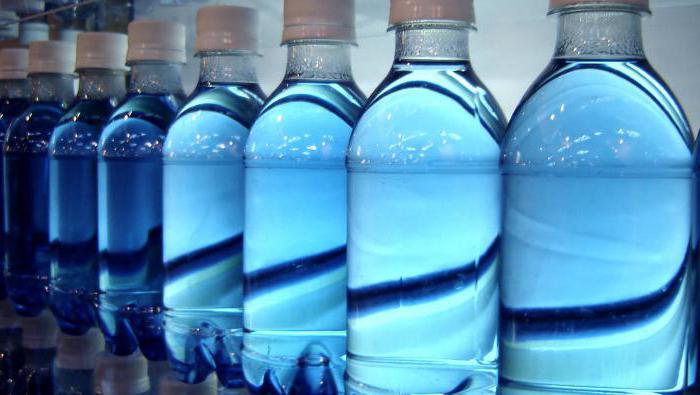
It is known that plastic does not decompose well. This process takes more than ten years. For this reason, this material negatively affects our environment. To cope with such a problem, factories are opening in many cities that process material hazardous to nature. Unfortunately, there are very few such companies. It is for this reason that many fast food establishments prefer to use only paper utensils. It is more environmentally friendly and harmless.
Plastic marking. Polystyrene tableware
In order not to harm your health, you need to know what the markings on plastic dishes mean. The decoding, which is described in our article, is remembered quite simply. Such information will definitely come in handy for you at a picnic or a party, and will also allow you to maintain your health.
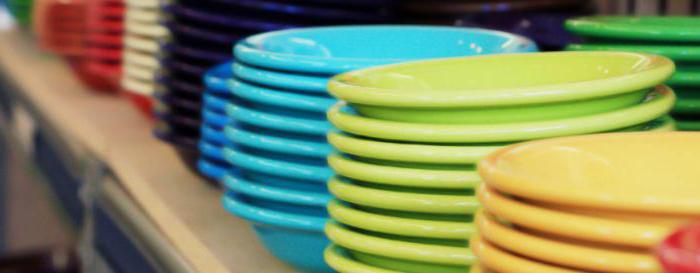
If there is a PS sign on plastic dishes, you can be sure that polystyrene is included in such containers. If used incorrectly, it is extremely hazardous to health. Plastic utensils with this mark can only be used for storing chilled foods. The thing is that when in contact with hot food, containers with polystyrene release styrene, which accumulates in vital organs. Over time, this can lead to the development of serious diseases. In such dishes it is also highly recommended not to store alcoholic beverages and heat food in the microwave.
Plastic tableware made of polypropylene
Is there a plastic Marking and its decoding, which is described in our article, will allow you to find out.
There is an opinion that disposable tableware should never be used in the microwave. However, it is not. On some plastic containers you can find a sign with the number 5 and the symbols PP. This marking indicates that the composition of the dishes includes polypropylene. It is in such a container that you can heat food in the microwave and pour hot tea into it. Few people know, but the dishes made of polypropylene are not deformed in contact with the contents, the temperature of which is not more than 100 degrees Celsius.
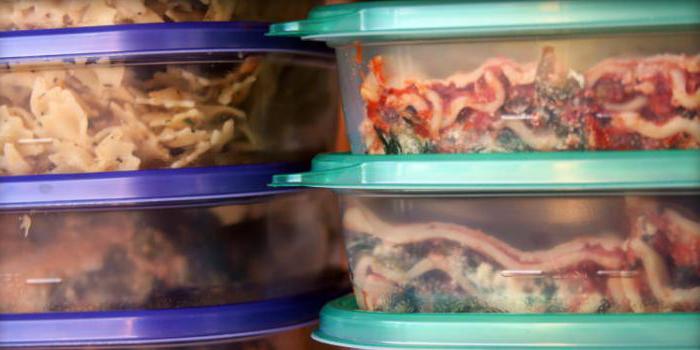
The only thing that should never be stored in such a container is alcohol. If alcohol was poured into polypropylene dishes, the plastic begins to release phenol, from the impact of which a person can completely lose his sight. A polypropylene container has a lot of positive qualities. It is known that it is quite durable and retains heat well. Today, plastic utensils are extremely popular. Labeling for the consumer is the main source of information that allows you to find out what this or that container is intended for.
What does the triangle of three arrows on plastic containers mean?
It is known what the markings on plastic utensils look like. In addition to numbers and letters, there is a triangle sign on it, which consists of three arrows. Not everyone understands what it means. Such a closed cycle of arrows indicates that the used dishes are subject to further processing. As a rule, a number is located inside the triangle, and below it are several letters. They can tell you about the material from which the dishes you have chosen are made.
Sign with cutlery
The labeling of plastic utensils is the first thing a consumer should pay attention to when buying. As we said earlier, if used incorrectly, containers can cause irreversible harm to health. Often on plastic dishes you can find a sign depicting cutlery. Such a marker indicates that food products can be stored in this container. If such a sign is crossed out, then you can be sure that the product is not intended for use in the kitchen.
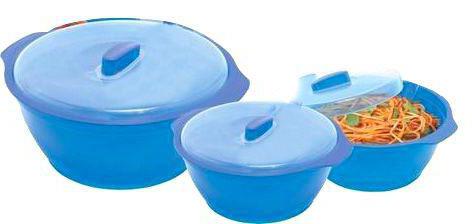
To protect yourself and your loved ones, you need to know and remember what the labeling of plastic utensils means. The decoding, which is described in our article, will allow you to find out what is included in a particular container.
If you go on a picnic with plastic utensils, then in no case do not burn it after it is over. When burning, disposable containers release substances hazardous to health. Experts strongly recommend not to eat in those establishments that use plastic utensils. If you have no other choice, then be sure to pay attention to its quality. Labeling plastic utensils will allow you to find out if they are used correctly in a particular establishment. A similar situation is with. Often, with a great desire to save money, they use cheaper glasses that are not designed to store hot drinks.
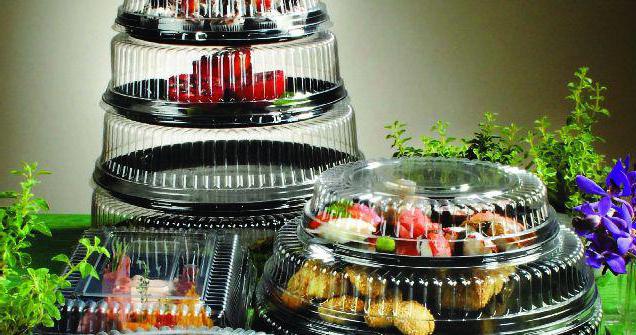
As we said earlier, never reuse disposable tableware. This rule is not accidental, because in this case, the top layer on the surface of the plastic container is destroyed, and it begins to release life-threatening chemicals.
Gastroenterologists strongly discourage the use of plastic utensils. They emphasize that under any circumstances, part of the polymers still enters the human body. It is known that over time they accumulate and become causative agents of serious diseases. Experts strongly recommend not to use disposable containers, or at least pay attention to the recommendations for its use. Marking plastic utensils will allow you to find out what this or that container is suitable for. Doctors recommend already today to abandon the use of such kitchen items and use only those disposable containers that are made of thick paper.
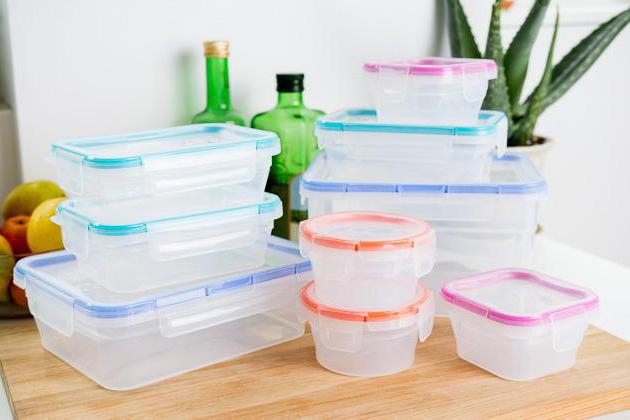
Summing up
In the warm season, plastic dishes are especially popular. The marking of such containers is described in our article. We strongly recommend that you remember its decoding in order to maintain your health. Plastic utensils have a lot of positive qualities. It is cheap and compact. However, it also has several disadvantages. When used correctly, it will bring you only joy and will not ruin your picnic. Be healthy!
Product labeling became the norm in European countries a few years ago. Russian manufacturers have begun not only to use European labeling standards, but have also developed domestic standards. Product labeling will help you choose the right product.
Labeling of packaging materials
Der Grune Punkt. Green dot. Since 1990, it has been placed on packaging materials, and means that the manufacturer guarantees the acceptance and recycling of labeled packaging material. Used in Germany, France, Belgium, Ireland, Luxembourg, Austria, Spain and Portugal and several other countries:
The triangle of three arrows - "Möbius loop", means that the material from which the packaging is made can be recycled, or that the packaging is partially or completely made from recycled materials:
Recyclable plastic sign. This sign is placed on all types of polymer packaging. Plastic packaging is divided into 7 types of plastics, each of them has its own digital symbol, which manufacturers apply to inform about the type of material, the possibilities of its processing and to simplify the sorting procedure before sending the plastic for recycling and recycling:
The number indicating the type of plastic is located inside the triangle. Under the triangle is an alphabetic abbreviation indicating the type of plastic:
1. PET(E) or PET - polyethylene terphthalate. Used for the manufacture of packaging (bottles, cans, boxes, etc.) for bottling soft drinks, juices, water. Also, this material can be found in packages for various types of powders, bulk food products, etc. Very well recyclable and reusable.
2. PEHD (HDPE) or HDPE - low pressure polyethylene. Used to make mugs and bags for milk and water, bottles for bleach, shampoos, detergents and cleaners. For making plastic bags. Canister for engine and other machine oils, etc. Very well recyclable and reusable.
3. PVC or PVC - polyvinyl chloride. Used for packing liquids for window cleaning, food vegetable oils. Cans are made from it for packaging bulk food products and various kinds of edible fats. And it is this plastic that is practically not recyclable. Moreover, there is evidence that the carcinogen vinyl chloride contained in it has the ability to penetrate food, and then into the human body. Also for the production of PVC, many additives are used that are very toxic to humans: phthalates, heavy metals, etc. And yet, the process of production, use and disposal of PVC is accompanied by the formation of a large amount of dioxins (the most dangerous poisons) and other extremely toxic chemicals.
4. PELD (LDPE) or LDPE - high pressure polyethylene. Used in the production of plastic bags, flexible plastic packaging and some plastic bottles. Good for recycling and reuse.
5. PP or PP - polypropylene. Bottle caps, disks, bottles for syrup and ketchup, cups for yogurt, packaging for photographic films, bags, containers, pipes, parts of technical equipment, non-woven materials are made from it.
6. PS or PS - polystyrene. Used in the production of pallets for meat and poultry, containers for eggs, in the construction industry - thermal insulation boards, fixed formwork, sandwich panels, ceiling baguette, ceiling decorative tiles.
7. O(ther) or OTHER. A mixture of various plastics or polymers not listed above. Packaging marked with this number cannot be recycled and ends its life cycle in a landfill or in an incinerator.
There are other signs for different types packaging materials, paper or cardboard products, which can either be produced from recycled materials or recycled (in certain cases - within the framework of special programs):



This sign is found with different signatures, such as "Keep your country tidy" ("Keep your country clean!" - English) or, for example, simply "Gracias" ("Thank you" - Spanish):
Marking of electronics and household appliances
This marking was developed by TCO (Swedish Confederation of Professional Workers), the Swedish Society for the Conservation of Nature and the Swedish State Department of Electricity. This standard covers a wide range of issues: environment, ergonomics, usability, electromagnetic field emissions, energy consumption, electrical and fire safety:


Environmental requirements include restrictions on the presence and use of heavy metals, bromo- and chlorine-containing flammable substances, freons (CFC) and chlorine solvents. The product must be suitable for recycling, and the manufacturer must conduct an environmental policy, taking into account the requirements of all importing countries of the product.
Information about the energy consumption of a household device will be given to you by the labeling of the product indicating the energy saving class:
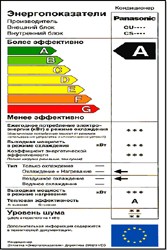
The crossed-out container sign on electronic equipment indicates that under no circumstances should this item be thrown into the trash. Electronic waste is very dangerous for human health and pollutes the environment. This sign is now put not only on electronic equipment, but also on other types of goods that cannot be thrown along with ordinary garbage:

Eco label
Some types of eco-labels do not apply to food, beverages, medications and should not be applied to substances and materials recognized as hazardous in accordance with EU legislation, as well as to products, the production process of which could have a harmful effect on people and the environment:
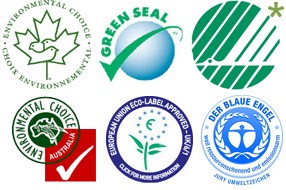
* In the Scandinavian countries (Denmark, Iceland, Finland, Norway, Sweden) the official eco-label "Scandinavian Swan" is registered. Since 1999, it has guaranteed that a product or service meets extremely high environmental standards that take into account the life cycle, negative influences, quality, compliance with environmental standards. Environmental criteria are reviewed regularly to ensure that a labeled product or service meets industry standards.
The placement of these marks is allowed for manufacturers whose products meet the criteria established by the coordinating council for the use of the mark.
Among the marks used on the territory of Russia, the Mark of Conformity of the System of Mandatory Certification for Environmental Requirements is used:
A separate group of signs on household appliances, aerosol preparations and other materials - "Does not contain freon", CFC Free:

Products, in the course of production, processing or treatment of which chlorine, chlorine-containing oxidizing agents and organochlorine compounds were not used as a feedstock in the manner prescribed, are marked with the “Free from chlorine” sign:
Food labeling
Information on the naturalness of products (raw materials) of organic origin, grown without the use of chemicals, produced without dyes and artificial food additives, is displayed as a label:

Product labeling “Does not contain GMOs” means that the products have been tested by the Moscow government and do not contain transgenes:
In the Russian regions, you can also find the icon " Without transgenes":
Seafood, fish, canned food can be marked with the “Dolphin-friendly” sign - this is a declaration that drift nets were not used in the process of catching fish:

Cosmetics labeling
In 1998, the British Union (BUAV) approved the Standard for Ethical Cosmetics. This is a globally recognized scheme that allows consumers to determine which cosmetics have not been tested on animals. The most ethical companies were recognized as using ingredients that, within 5 recent years have not been tested on animals:
In 2002, the European Union adopted a ban on cosmetics testing, which will come into force in 2009.
In 2003, a similar Standard for Ethical Household Chemistry appeared.
"Ethical" cosmetics are marked with the badges "Not tested on animals" ("Not tested on animals"), "Animal friendly". Cosmetics that do not contain animal ingredients are marked with a "V" (vegan).
Plastic has firmly taken its place in our kitchens., on the shelves of which appeared various plastic bowls, storage containers, baking dishes, plates and cups. We drink, eat, store food in it, heat food in the microwave in it. Nowadays, in some European countries, up to 70% of residents eat at home from disposable dishes.
High popularity of plastic utensils due to the fact that it is convenient, light and cheap, and if it is disposable, then it does not need to be washed.
Signs on plastic utensils
For sorting plastic, an international marking was developed, a triangle formed by arrows with a number inside. Under the triangle, together with or instead of a number, an alphabetic plastic code can be indicated. Plastic packaging is divided into 7 types.
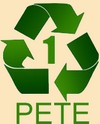 Polyethylene terephthalate PET(E) or PET used for the production of disposable bottles for:
Polyethylene terephthalate PET(E) or PET used for the production of disposable bottles for:
- water,
- soda and beer,
- cosmetic products,
- dairy products,
- vegetable oils.
Completely prohibited reuse may release phthalates.
 High pressure polyethylene PEHD (HDPE) or LDPE used for production:
High pressure polyethylene PEHD (HDPE) or LDPE used for production:
- packaging bags,
- garbage bags,
- milk packaging.
May release carcinogenic formaldehyde.
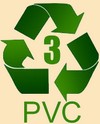 Polyvinyl chloride V, PVC or PVC used for production:
Polyvinyl chloride V, PVC or PVC used for production:
- finishing and building materials,
- shoes,
- furniture,
- water bottles,
- medical products,
- films for wrapping products.
This plastic is virtually non-recyclable. May release phthalates, heavy metals, and vinyl chloride in contact with fatty or hot foods.
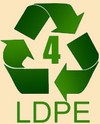 Low pressure polyethylene PELD (LDPE) or HDPE used for production:
Low pressure polyethylene PELD (LDPE) or HDPE used for production:
- detergent bottles,
- pipes,
- toys,
- packages and films for wrapping products.
May release formaldehyde.
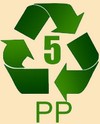 Polypropylene PP or PP used for production:
Polypropylene PP or PP used for production:
- glasses and jars,
- medical products,
- dishes for hot meals,
- food packaging film
- food containers.
May release formaldehyde
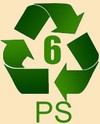 Polystyrene PS or PS used for production:
Polystyrene PS or PS used for production:
- cups for hot drinks (similar to Styrofoam),
- trays for products (similar to foam),
- cups for dairy products,
- electrical insulating film
- food containers,
- forks and spoons.
May release the chemical estrogen and the carcinogen styrene.
 Polycarbonate and other plastics O, OTHER or OTHER, used for the production of:
Polycarbonate and other plastics O, OTHER or OTHER, used for the production of:
- baby bottles,
- multilayer packaging,
- composite plastic,
- reusable water bottles.
May release bisphenol A.
Harm of plastic utensils
Studies have shown that plastics can be hazardous to health. Harmful substances from plastic begin to get into food even at the slightest heat, and often at room temperature.
Polyethylene terephthalate (PET)
Disposable cups and plates for fast food establishments are made from polyethylene terephthalate (PET). It must not be used in the microwave or filled with hot food. PET utensils have a shelf life - one year, after which harmful substances may begin to be released, as a result of which it is impossible to stock such utensils for future use.
Polystyrene (PS) dishes also do not like high temperatures and are intended for cold food and drinks.
Polypropylene (PP)
Tableware made of polypropylene (PP), can withstand high temperatures so you can heat food in the microwave. A cup of hot tea can be held in your hand and will not be hot. The big disadvantage of this dish can be considered its lack of love for fats, when in contact with them, polypropylene breaks down and releases toxic substances.
Polycarbonate (PC)
Polycarbonate (PC) cookware is the safest and most practical. In appearance, it looks like ceramic or porcelain dishes. Polycarbonate tableware, does not break and does not oxidize. It is used to make storage containers and baking molds.
Silicone
Silicone cookware will cope with temperatures from -60 to +280 degrees. Molds for jelly and ice cupcakes are made from this material. Silicone cookware is soft, very slippery and non-stick, so it does not need to be lubricated before use.
Bisphenol A and phthalates
Polycarbonate baby bottles have replaced glass ones. But not everyone knows that bisphenol A (BPA), which is used in the production of polycarbonate, can come from polycarbonate in liquids.
BPA is very similar in effect to female sex hormones, interfering with normal hormones and promoting obesity, breast cancer, heart disease and diabetes. In particular, it is dangerous for the development of the boy's reproductive system when he is in his mother's stomach.
The US has even banned the use of baby bottles that use BPA.
Three years ago, Canadian scientists issued the first warnings about the dangers of VRA. They proved that the substance used in the manufacture of plastic dishes leads to modifications in the brain and exposes the body to the risk of breast or prostate cancer.
Phthalates should also be added to the list of toxic substances that can turn into fats from plastic dishes. They give plastics elasticity. Phthalates are just as toxic as bisphenol. They are in the films in which sausage, cheese and other products are packaged.
Safe use of plastic utensils
Having brought products from the store, they must be immediately transferred from the packaging to glass metal or ceramic dishes.
If you use plastic dishes at home, then only for cold food and water, since when preparing coffee or soups, the water heats up to 100 ° C. And according to GOST, the dishes are tested at temperatures up to 75 ° C, which means that the tests are softer real circumstances in the kitchen.
For cooking and for hot food, only burnt dishes can be used in which the surface has been glazed, and due to this it has become inert to food. Stainless steel and glass behave in the same way.
When playing the text of an article Plastic utensils harm and labeling, in whole or in part, an active link to the site site is required.
On each plastic product, the manufacturer must indicate the material from which it is made. The vast majority of manufacturers honestly label. If there is no marking, then the plastic is definitely hazardous to health. There are 7 types of markings:As you can see, they differ only in numbers, each of which corresponds to a certain polymer from which this plastic is made. Under these triangles may contain additional letter designations. Some manufacturers put additional markings, for example, this:
This marking means that this plastic is safe for food use. However, it is not required and you can do without it. The most important thing is to remember what the numbers mean, but first a little background on some dangerous substances:
- Phthalates- salts and esters of phthalic (orthophthalic) acid. Toxic, can cause serious illness nervous and cardiovascular systems. There is reason to believe that phthalates have a carcinogenic effect and can cause cancer. Banned in Europe and the US for the manufacture of children's toys.
- Formaldehydes- methanal or formic aldehyde. It is toxic, affects the nervous and respiratory systems, negatively affects the reproductive system and can cause genetic disorders in offspring. Carcinogen.
- Styrenes- phenylethylene, vinylbenzene. Slightly toxic, affects mucous membranes. It has carcinogenic properties, can act as chemical estrogen, which will adversely affect reproductive functions.
- Vinyl chloride- an organic substance, which is the simplest chlorine derivative of ethylene. Toxic, affects the central nervous system, skeletal system, brain, heart, liver, causes systemic lesions of the connective tissue, destroys immune system. It has a carcinogenic, mutagenic and teratogenic (causes malformations in embryos) effect.
- Bisphenol A- diphenylpropane. It is similar to estrogens, causes brain diseases, disrupts the reproductive system, causes cancer, leads to male and female infertility, inhibits the function endocrine system, leads to a violation of the development of the brain in children, the development of cardiovascular pathologies.
All these substances are auxiliary, they are contained in a particular type of plastic and thanks to them the desired consumer properties (elasticity, hardness, heat resistance, etc.) are achieved. The plastic itself will calmly pass through the gastrointestinal tract without causing harm (unless it has a mechanical effect), but the excipients are dangerous. You also need to understand that the final product may not be toxic, but it may contain residues of toxic raw materials from which it was made.
Types of plastics and their marking
Number 1- polyethylene terephthalate. Letter marking PETE or PET.
Cheap, thanks to which it is found almost everywhere. It contains most drinks, vegetable oils, ketchups, spices, cosmetics.
Safety. Suitable for single use ONLY. Repeated use may release phthalates.
Number 2- high density polyethylene. Letter marking HDPE or PE HD.
Cheap, lightweight, resistant to temperature effects (range from -80 to +110 degrees C). Disposable tableware, food containers, bottles for cosmetics, packaging bags, bags, toys are made from it.
Safety. It is considered relatively safe, although formaldehyde may be released from it.
Number 3- polyvinyl chloride. Letter marking PVC or V.
This is the same PVC from which window profiles, furniture elements, films for stretch ceilings, pipes, tablecloths, curtains, floor coverings, containers for technical liquids are made.
Safety. Prohibited for food use. It contains bisphenol A, vinyl chloride, phthalates, and may also contain mercury and/or cadmium. We would like to say that you need to buy expensive window profiles, expensive stretch ceiling, expensive laminate and it will make your life safe, but it will not be true. The high cost of products does not give any guarantees.
Number 4- low density polyethylene. Letter marking LDPE or PEBD.
A cheap and common material from which most bags, trash bags, CDs, linoleums are made.
Safety. Relatively safe for food use, in rare cases it can release formaldehyde. Plastic bags are not as dangerous to human health as dangerous to the ecology of the planet.
Number 5- polypropylene. Letter marking PP.
Durable and heat-resistant plastic from which food containers, food packaging, syringes, toys are made.
Safety. Pretty safe, but under certain conditions it can release formaldehyde.
Number 6- polystyrene. Letter marking PS.
Cheap and easy to manufacture plastic, from which almost all disposable tableware is made, yogurt cups, trays for meat, fruits and vegetables (they are made from foamed polystyrene, i.e. expanded polystyrene), food containers, toys, sandwich panels, heat-insulating plates.
Safety. It can release styrene, which is why disposable tableware is called disposable.
Number 7- polycarbonate, polyamide and other types of plastics. Letter marking O or OTHER.
This group includes plastics that have not received a separate number. They are used to make baby bottles, toys, water bottles, packaging.
Safety. They contain Bisphenol A, more precisely, some of them contain, and some plastics from this group, on the contrary, are distinguished by increased environmental friendliness.




















